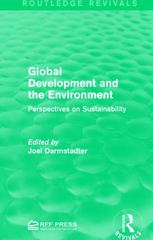Question
The estimates in this question come from a sample of 545 men observed relatively early in their career in the National Longitudinal Survey of Youth
The estimates in this question come from a sample of 545 men observed relatively early in their career in the National Longitudinal Survey of Youth (NLSY). 2.1. In a regression of log hourly wages on an indicator of labor union membership, we find the following estimates. ln(wage) = 1.84 + 0.087 union If an indicator for Black workers is added to the regression, we find the following estimates. ln(wage) = 1.86 + 0.121 union 0.248 Black Which of the following is true about the relationship between the Black and union indicators? 1 (a) They are positively correlated. (b) They are negatively correlated. (c) They are uncorrelated. 2.2. In a simple regression of the Black indicator on the union indicator, what would the slope coefficient be? 2.3. You know that workers in urban areas tend to earn more than workers in rural areas, and you suspect that union membership rates are higher in urban areas than rural areas. If you begin with a simple regression of log wages on a union indicator, then estimate a multiple regression that adds an urban indicator, what do you expect will happen to the coefficient on the union indicator? (a) It will not change. (b) It will become larger in magnitude. (c) It will become smaller in magnitude. 2.4. Union membership rates are higher at public-sector employers than at private-sector employers. In a regression of a union indicator on a public-sector indicator, we find the following estimates. union = 0.143 + 0.216 public How much higher are union membership rates in public-sector jobs? (a) 21.6 percent (b) 21.6 percentage points (c) 35.9 percent (d) 35.9 percentage points 2.5. Suppose we had instead regressed the public-sector indicator on the union indicator. What could we say, if anything, about the slope coefficient in this regression? (a) The slope coefficient would be 1 0.216 = 4.63. (b) The slope coefficient would be negative, but we cannot determine the value with the given information. (c) The slope coefficient would be 1 0.216 = 4.63. (d) The slope coefficient would be positive, but we cannot determine the value with the given information. (e) We cannot determine the sign of the slope coefficient with the given information. 2.6. Some evidence suggests that in unionized firms, compared to non-unionized firms, wages are more compressed and the returns to skill are lower. In a regression of log hourly wages on a union indicator, years of experience, and an interaction between the two variables, we find the following estimates. ln(wage) = 1.19 + 0.179 union + 0.067 exper 0.015 union exper For a non-union worker, what is the predicted percentage increase in hourly wage for each additional year of experience? 2 2.7. For a union worker, what is the predicted percentage increase in hourly wage for each additional year of experience? 2.8. Consider a union worker and a non-union worker who each have 4 years of experience. How much higher is the predicted hourly wage of the union worker compared to the non-union worker, in percent?
Step by Step Solution
There are 3 Steps involved in it
Step: 1

Get Instant Access to Expert-Tailored Solutions
See step-by-step solutions with expert insights and AI powered tools for academic success
Step: 2

Step: 3

Ace Your Homework with AI
Get the answers you need in no time with our AI-driven, step-by-step assistance
Get Started


